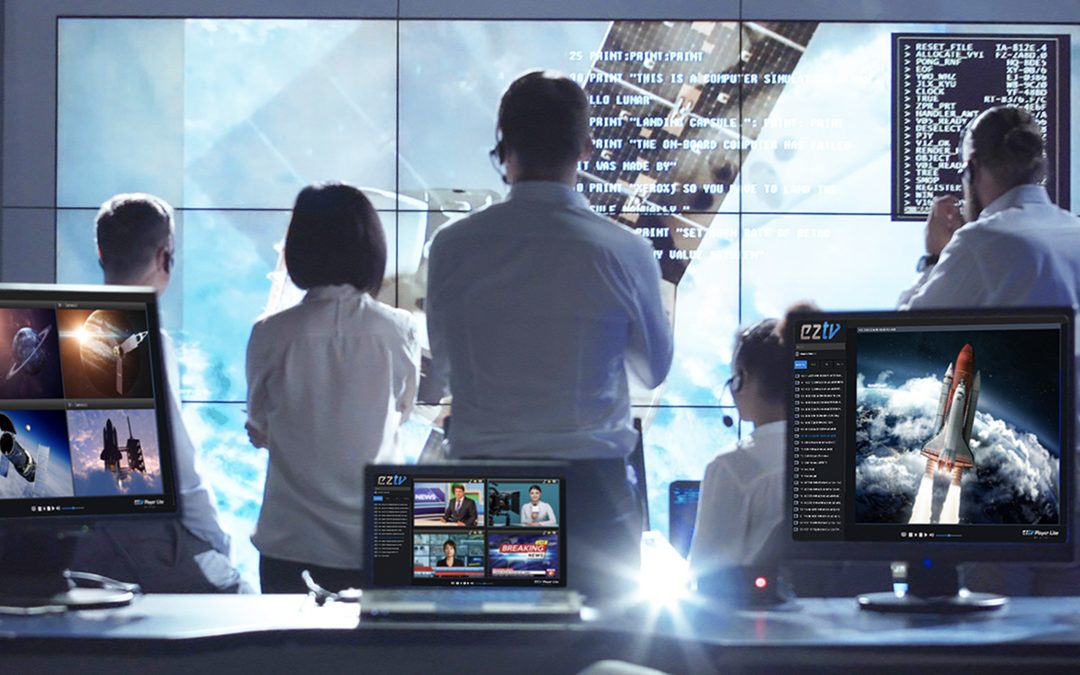NASA Space Exploration Aided by VITEC IPTV Video Solutions
For the first time in a generation, NASA is building a spacecraft for manned deep-space missions. The Orion Multi-Purpose Crew Vehicle is being built to take humans farther than they’ve ever gone before and will usher in a new era of space exploration. By mid-decade, Orion is expected to take the next man—and first woman—to the moon, with follow-on missions that will eventually result in crewed missions to Mars as part of NASA’s Artemis Program.
To support this modern and epic journey, NASA turned to VITEC for a video solution capable of delivering high fidelity full motion images captured in space to monitor and maintain equipment. It is a challenge that requires video technologies to bridge the gap between:
- Equipment that has been under development for over decade; and
- Cutting-edge applications based on open standards that are now available to deliver video via IPTV.
To learn more about how VITEC is delivering a solution that addresses NASA’s unique set of challenges, we caught up with Richard Bernard, Senior Product Manager at VITEC.
Q: Thank you, Richard, for taking the time to chat. Can you tell us a little bit about the role of video in NASA’s environment?
Richard Bernard: The environment in which video solutions must work for the Orion spacecraft are extremely harsh and volatile, with a tremendous number of variables that are constantly shifting which can affect how video streams are transmitted. To support operations in these challenging conditions the agency deploys proven, mature solutions that have stood the test of time.
Only the most proven, field-tested technologies can be trusted to launch astronauts safely and securely into space. This includes Internet Protocol Television (IPTV) technology. The designs and plans associated with the Orion spacecraft were announced in 2011 with the objective of sending men and women to the Moon by 2024 as an interim step for NASA’s Journey to Mars initiative.
Companies like VITEC have introduced robust innovations that are capable of contributing to the mission by enhancing the ability to monitor critical systems on the spacecraft.
NASA uses video streams from cameras onboard the spacecraft to transmit images back here on Earth to greatly improve safety and quality assurance measures. They will enhance the ability to monitor cracks in panels that may not be detected by sensors. In such situations, video technology literally provides ‘the eyes’ on potential problems.
Q: When NASA came to VITEC, what solutions were they looking to solve?
Richard Bernard: NASA needed a solution that would extend the ability for video traffic to interact with a number of different protocols, including those that are specific to NASA. The agency needed a decoder that could be compatible with video feeds coming from sophisticated — but proprietary — on-board IP cameras developed by NASA and its contractors to capture video in space.
“NASA needed a decoder that could be compatible with video feeds coming from sophisticated — but proprietary — on-board IP cameras developed by NASA and its contractors to capture video in space,” says Bernard.
The cameras provide support for both high and low frame rate streams as well as images ranging from QCIF to 4K. They were looking for a system that allows the resolution and frame rate to be adjusted based on the bandwidth available between Orion and Earth. Those are a lot of variables and NASA needed a highly flexible and robust decoder to handle those very precise, fluctuating video feeds.
Once captured, NASA was looking for ways to share the video feeds with a growing community of interest that would contribute to the success of Orion missions. IPTV technology provided a clear path to harness video feeds for the kind of collaboration needed to ensure the safety of the crew and the integrity of the spacecraft itself.

Q: How did VITEC engage with NASA to leverage video technology in support of Orion’s mission?
Richard Bernard: We worked with NASA to ensure our video decoder would be totally compatible within their mixed proprietary / open standards workflows. Specifically, VITEC managed to adjust its stream capture module to manage the range of particular feeds used for this mission under different conditions and circumstances. Additionally, our hardware decoding platform ensured that video feeds — with any frame rate, frame resolution, or bitrate — could be decoded and rendered on industry standard video outputs, such as HDMI or SDI, for distribution to the people working on the Orion mission within the space center.
In addition to addressing the interoperability issues, it was important for the technology to be accessible and usable by NASA staff and partners. VITEC improved the efficacy of the video solution by utilizing openGear technology to address density issues for IPTV distribution.
The openGear ecosystem was designed and initially launched by Ross Video, as a hardware platform that can house up to 20 boards inside a 2RU rack. This ratio enables a high level of density that supports up to 20 channels. Because it is an open system, it defines common mechanical and electrical guidelines to integrate equipment from different vendors within the rack.
In short, VITEC’s solution modernizes NASA’s existing investments in equipment, enabling new functionality and extending the community that can benefit from—and contribute to—Orion missions. VITEC has laid the foundation for future-proofing Orion’s video capacity, enabling it to support new applications and innovations that contribute to NASA’s objectives today, tomorrow and beyond.



